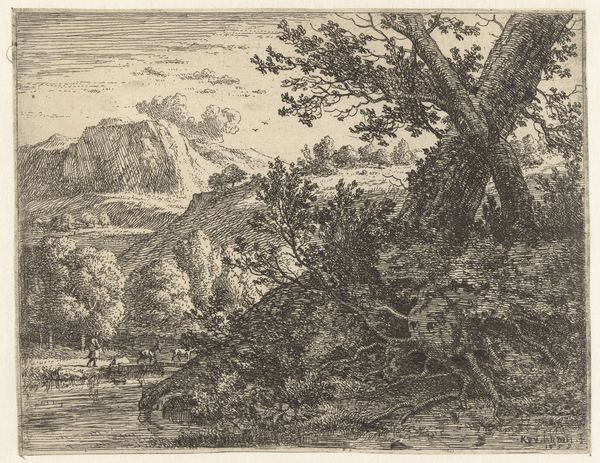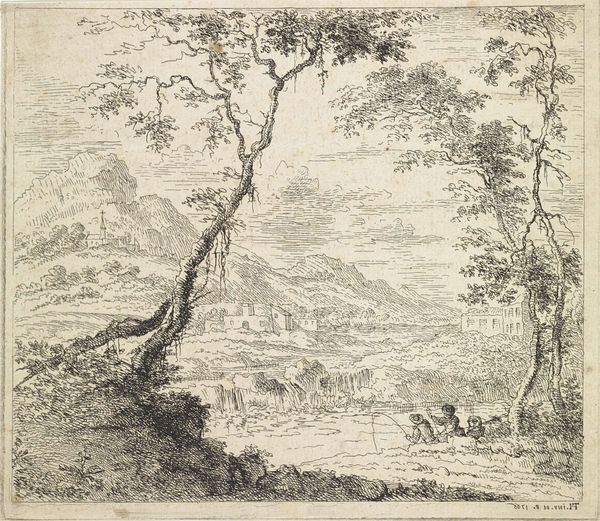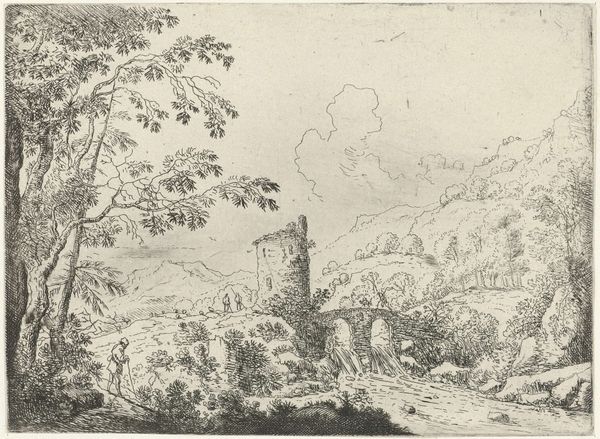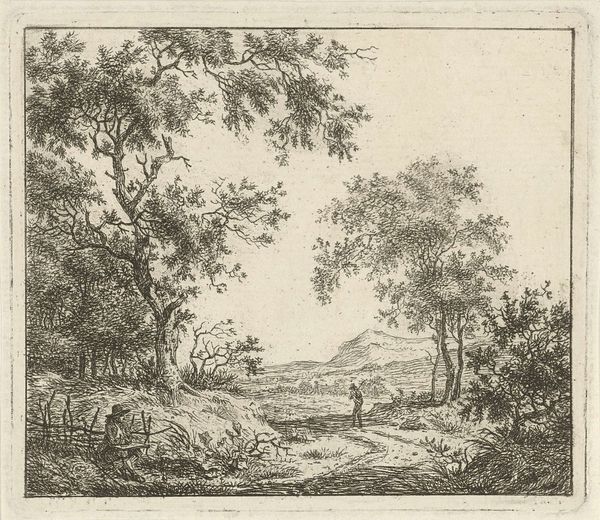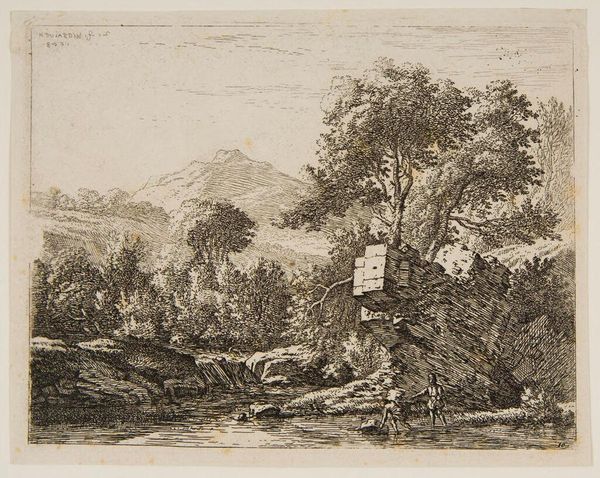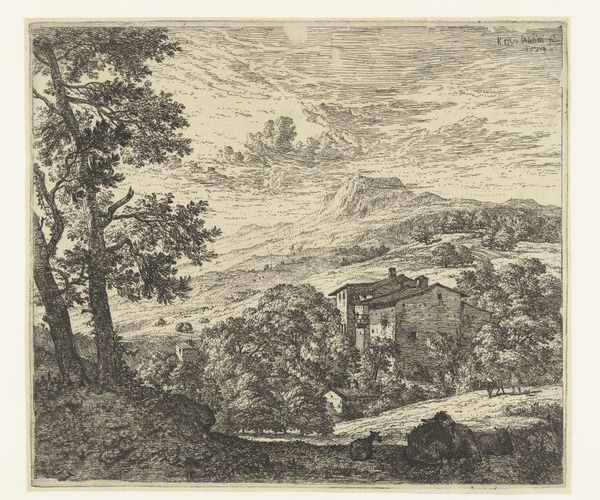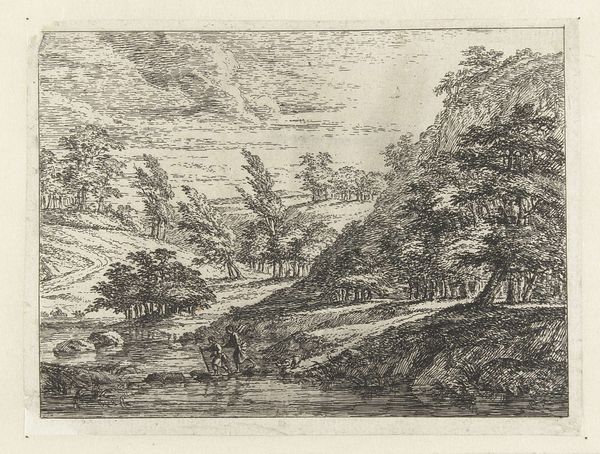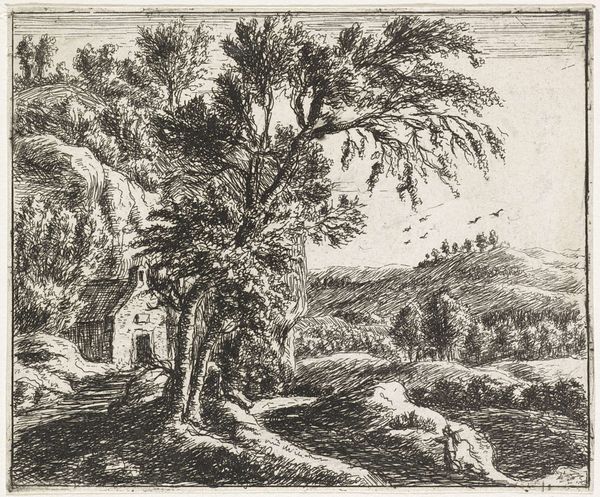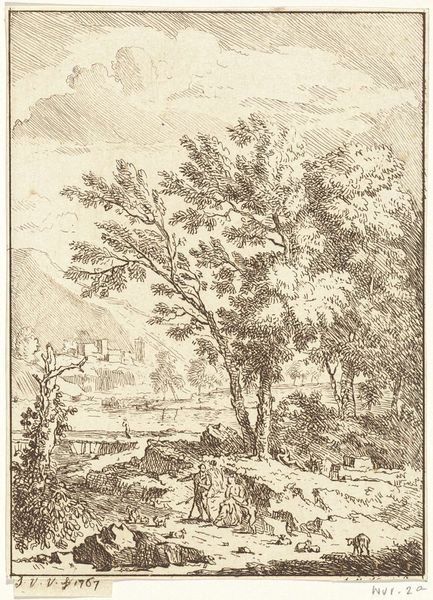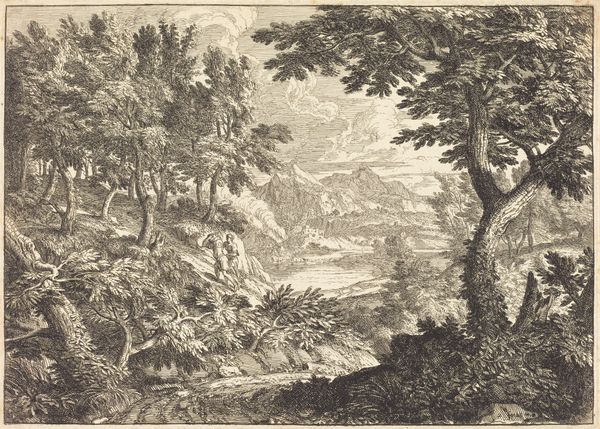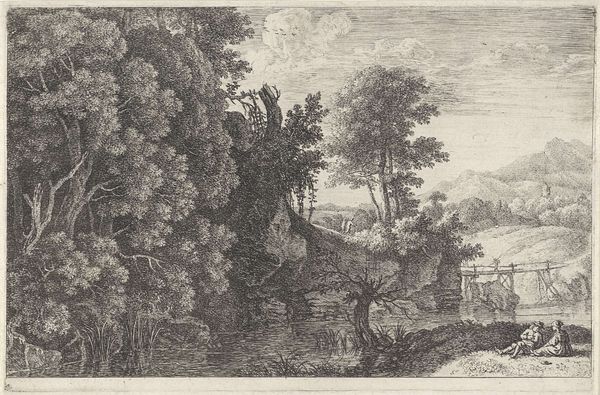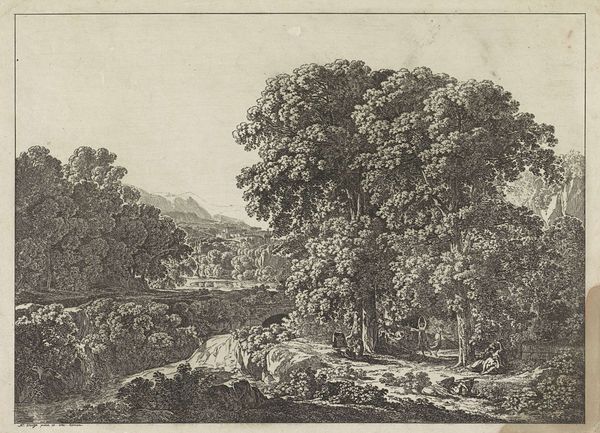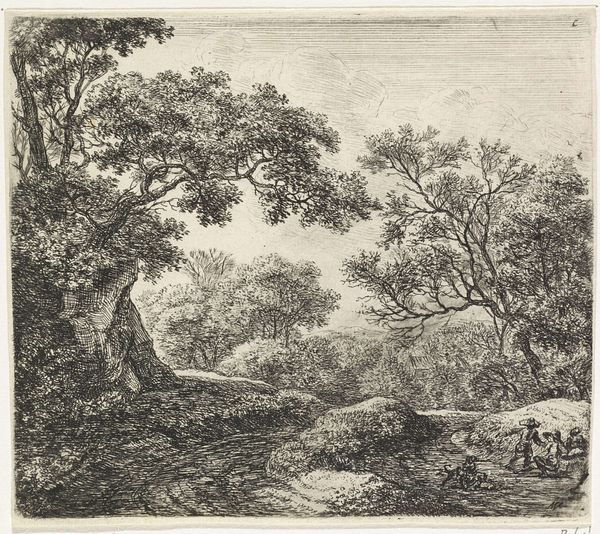
print, etching
#
baroque
#
dutch-golden-age
# print
#
etching
#
landscape
#
realism
Dimensions: height 121 mm, width 157 mm
Copyright: Rijks Museum: Open Domain
This etching, "Two Men by a Rock in the Water," was made by Karel du Jardin in the 17th century. The printmaking process involves coating a metal plate with wax, then drawing through it with a needle to expose the metal. The plate is then submerged in acid, which bites into the exposed lines, creating grooves that hold ink. Here, du Jardin's lines vary in thickness, achieved by controlling the depth of the acid bite, and the pressure applied during printing. Look at how the layering of fine lines creates tonal depth in the dense foliage of the trees. The figures in the river, rendered with simple strokes, provide a focal point. Etching was well-suited to du Jardin's style, allowing for a level of detail not easily achievable through other printmaking methods. The resulting image reflects the artist's close observation of the natural world and the subtle atmospheric effects he captured with this chemical process. This print invites us to consider the skill and labor involved in its production, and the ways in which these considerations are integral to its aesthetic impact.
Comments
No comments
Be the first to comment and join the conversation on the ultimate creative platform.
